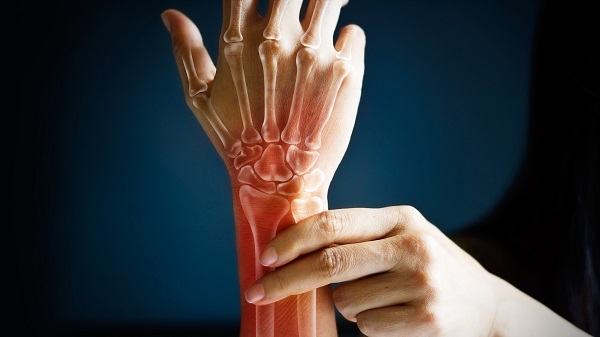Stem cell therapy might finally put an end to chronic pain
A pioneering stem cell therapy technique could be the key to providing relief from the debilitating nerve pain that affects millions of people around the globe.
Researchers at the University of Sydney are using stem cells taken from human skin to create pain-inhibiting cells that shut down or reverse the process that can lead to constant pain following nerve injury – including the ‘phantom pain’ that exists where a limb has been removed.

Associate Professor Greg Neely and his team want to start human trials in the next three years, which would see Australia take a leadership role in one of the fastest growing areas of medical research in the world.
“I presented at the 2018 International Association for the Study of Pain meeting in Boston, and got lots of positive responses,” says Neely. “People were impressed with the work and the fact that we have solid funding to develop this towards humans. Our trials would be a first.”
The whole story began with the humble fruit fly – an invaluable test subject for medical researchers.
Neely’s lab has been working with fruit flies for well over a decade, studying their genetics to understand how they sense and respond to pain. They are the perfect ‘guinea pigs’ – and not just because they have clear genetic markers and a super-fast 10-day lifecycle.
In fruit flies, sensory nerves plug into the ventral nerve cord, which works in a similar way to the spinal cord in humans, giving scientists an excellent proxy for the real thing.
Having mapped out the mechanism behind acute pain with the help of his fruit flies, Neely turned his attention to what happens after injury – and that’s when the initial breakthrough came.
He zeroed in on a cell in the ventral nerve cord that acts as ‘brake’ to set the pain threshold. Or at least, that’s what it does when things are as they should be.
Neely and his team discovered that, after nerve injury, the damaged nerves somehow remove or negate this brake – in other words, the cell goes missing.
Without a control mechanism, even the lightest touch can be painful. But when the brake is reapplied, the problem goes away.
“If what we were seeing was really true, then it was possible that, if we could find a way to fix the brakes or stop them from being broken, then we could resolve neuropathic [nerve] pain,” he explains.
That’s an exciting prospect when you consider that one in 20 people in Australia suffers from some form of nerve pain, caused by damage or disease in the nervous system, and two in three of those say there’s no treatment that provides them any real relief.
Stem cells – unspecialised cells that develop into specialised cells – are the perfect vehicle for a replacement ‘brake’, and it’s a relatively simple process nowadays to harvest them from skin.
Ideally, a patient could donate stem cells from their own skin, but the problem is it would be prohibitively expensive. Instead, Neely’s team is working to develop a generic transplant that could be widely used, just as some blood types are considered ‘universal’.
In their early trials, they tested inhibitor cells made from human cells that had been implanted into mice, and with great success. The next stage is to be more specialised in the cell creation, by using skin from people with chronic pain, and then testing the cells on larger animals.
Human trials will be approved once everyone is confident that they fully understand the potential impacts.
Neely received a Cell and Gene Therapy Grant from NSW Health in 2018 to support this promising therapy, with the aims of the Grants being to reduce the time between gathering evidence of effective treatments to delivering those treatments at scale.
“It’s exciting,” says Neely. “We’ve developed a therapy that we can now start developing for humans. We don’t know of anyone else who’s done this for pain.”
By Nick Carne
Updated 6 years ago